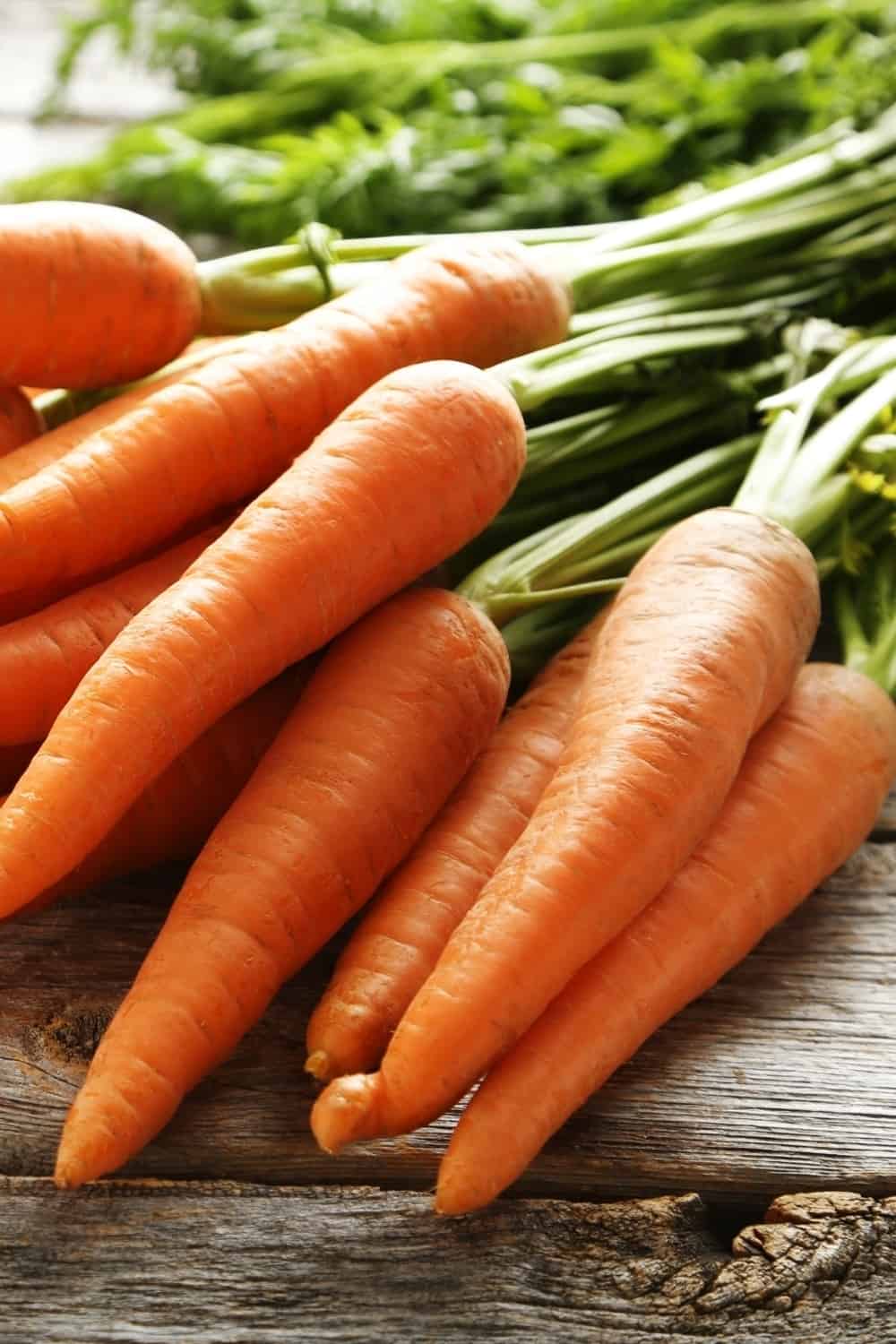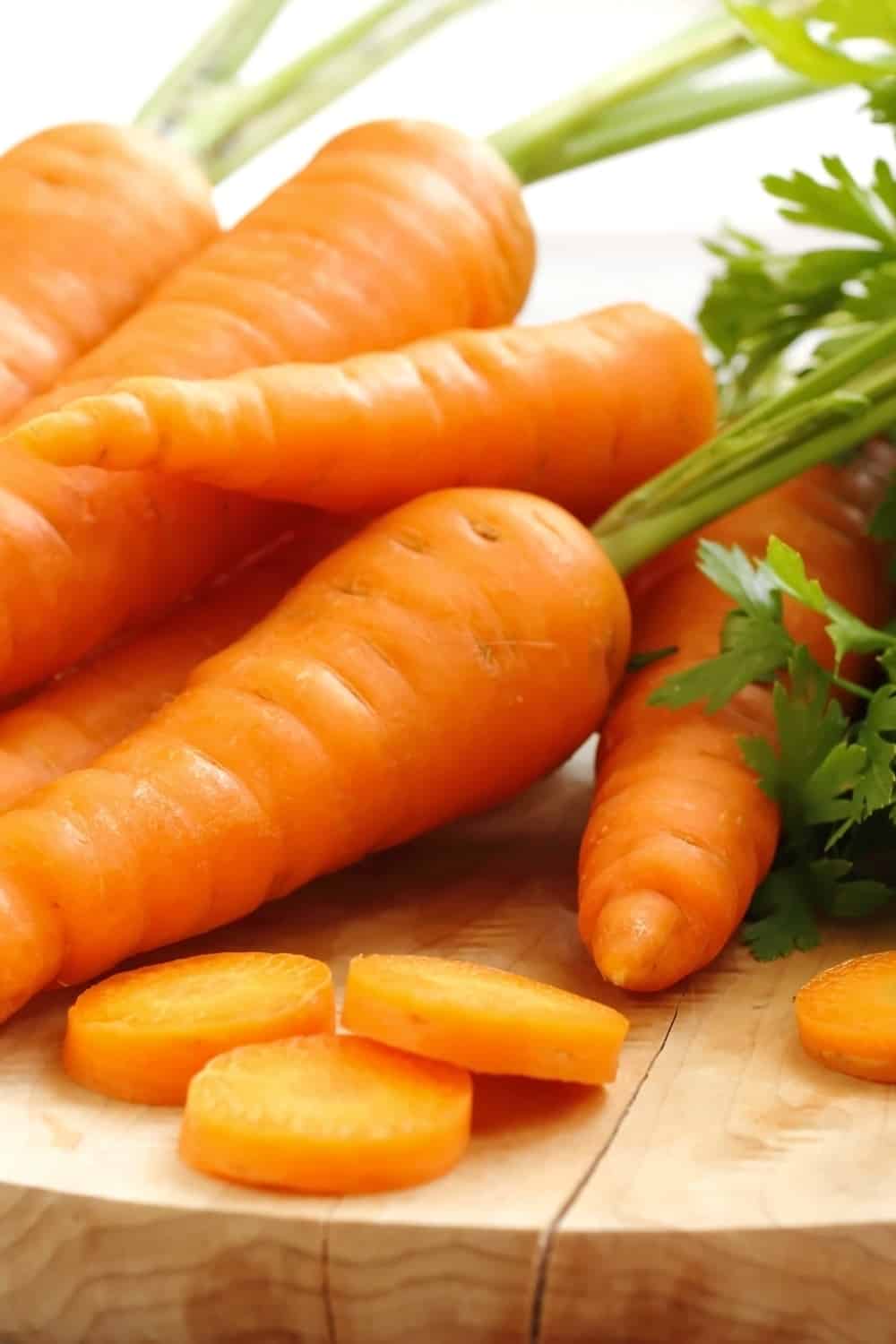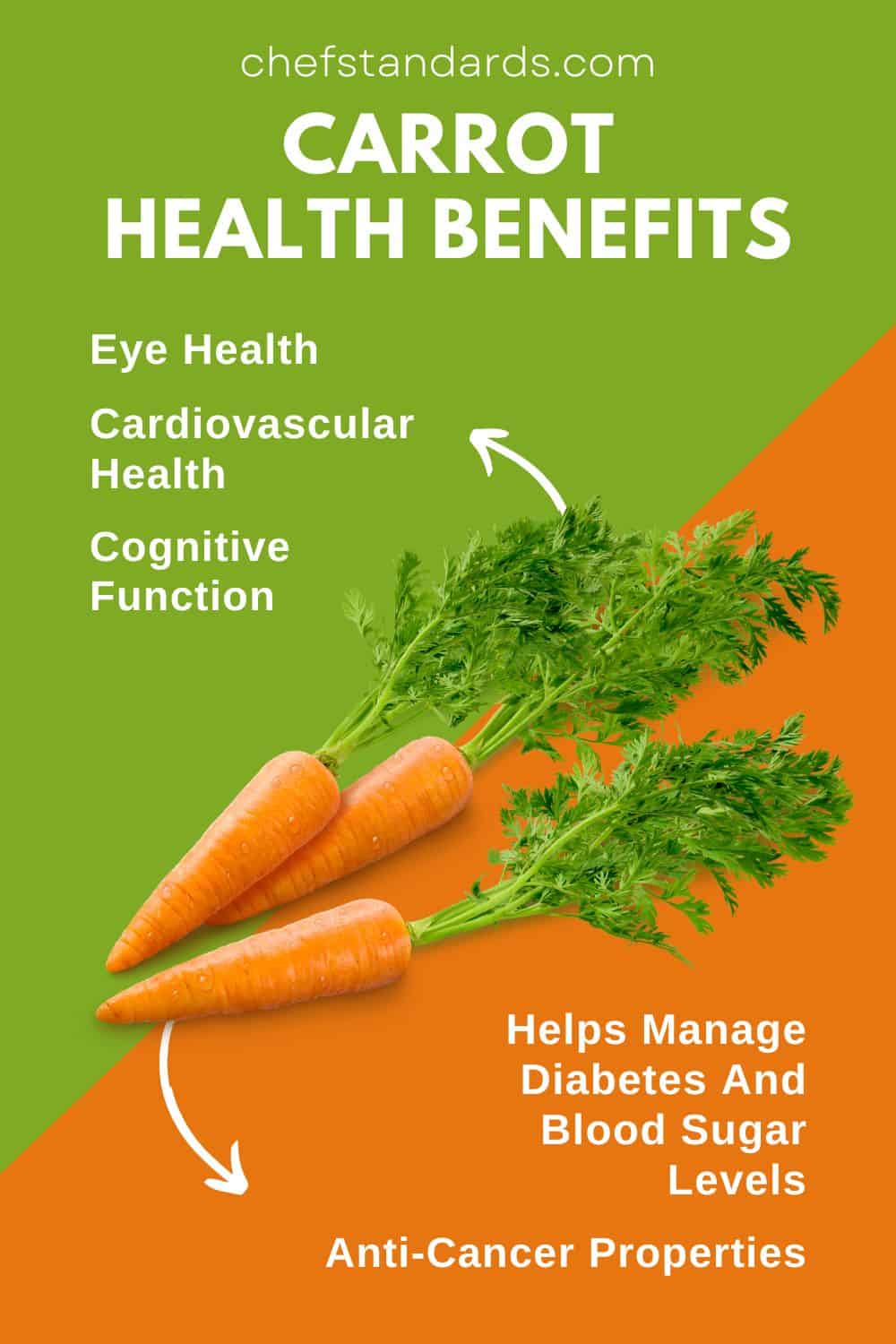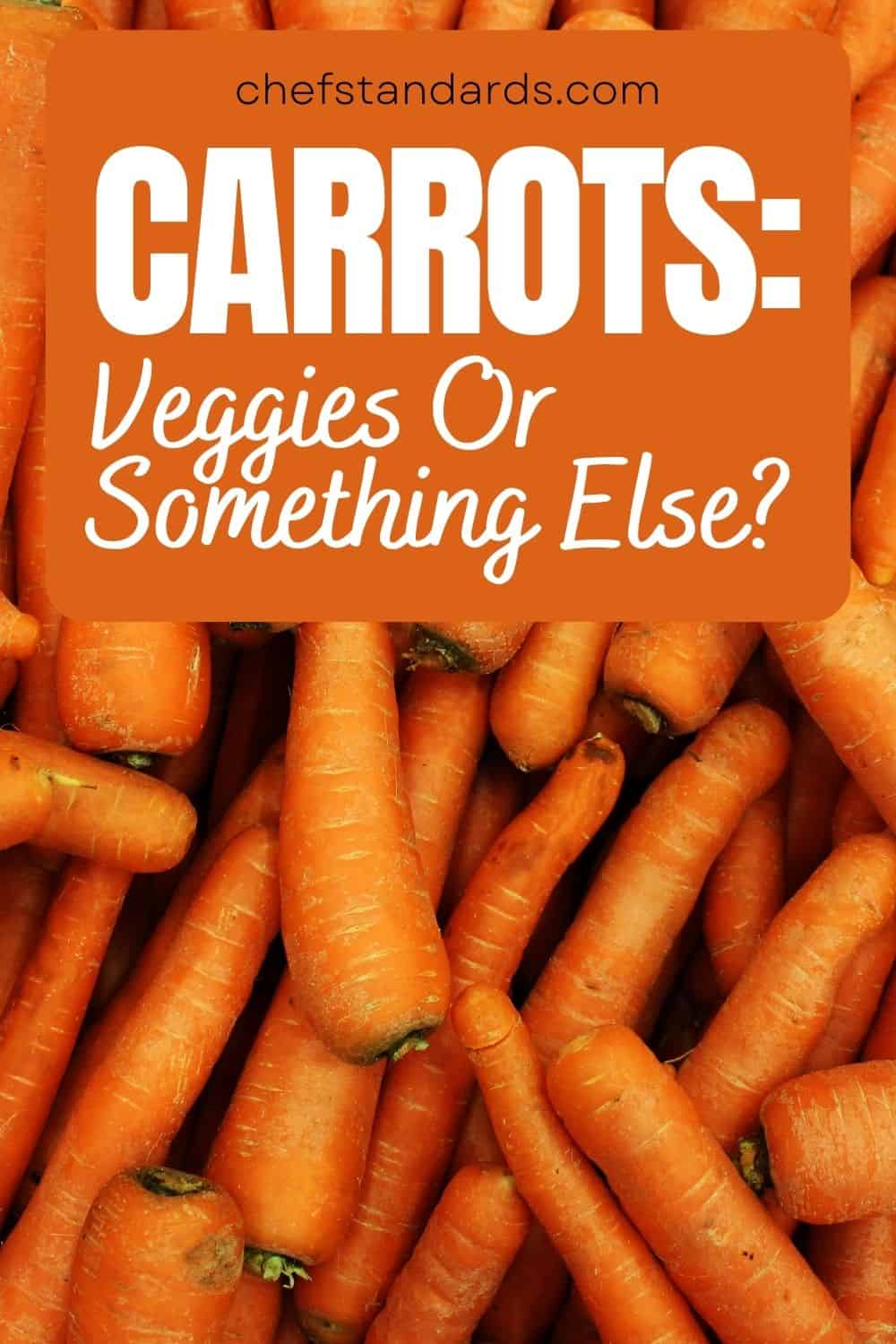When we speak about fruits and vegetables, most things are clear. We all know that apples or oranges are fruits and lettuce and broccoli are vegetables.
However, there are some types of fruits and veggies whose classification needs to be clarified.
One popular example is tomatoes which are mostly used as vegetables in the cooking world but are actually classified as fruits. And there are a few other examples as well.
One of those examples in which you and I are interested is the classification of carrots. And the main question is “Are carrots vegetables?”.
In this introduction part, I will reveal to you that carrots are indeed vegetables.
But if you want to know more details about them, their classification, and some other important information related to them, it is best that you continue reading.
What Are Carrots? Are Carrots Vegetables?

As I already said in the introduction, a carrot is a vegetable. More precisely, it is a root vegetable that originated in Persia in 900 AD and later came to Europe and other parts of the world.
Carrots we all know and buy from grocery stores and supermarkets nowadays are typically orange in color. These vegetables that start with c are part of the carrot plant alongside other parts including leaves, stem, flowers, and seeds.
Those parts can be also used in various dishes, but the edible taproot is the most frequently used part of the carrot plant. Exactly because of that taproot, carrots are classified as root vegetables, just like ube or taro for example.
Before I go into more detail on this interesting topic, I must also emphasize that carrot roots come in various other colors including yellow, red, purple, and white.
First, carrots were mainly yellow or purple in color, while those developing in Europe in the 15th century were orange.
How To Distinguish Fruits From Vegetables?
This is one of the most frequently asked questions and it is quite related to today’s topic. I assume that many people think that carrots are fruits because of their sweet flavor and the fact that they are often used in some types of cakes.
However, that is just one point of view when it comes to differentiating fruits from vegetables and it is often a false tray.
I will therefore explain to you how to differentiate fruits from veggies from both scientific and culinary perspectives and how that impacts the classification of carrots itself.
Scientific Perspective
I will start with science because it is the base of all things, including fruits and vegetables and their classification.
Speaking in scientific or botanical terms, vegetables are all parts of the plant that are not the ovary or any part of the ovary. Besides the ovary, the other parts of the plant include stems, leaves, and roots.
Since you already know that the carrot that you buy from the grocery store is a taproot based on the information above, it is easy to conclude that they are not fruits, but rather vegetables.
However, I will also say a few words about fruits and their classification in scientific terms, so that you will have all the information after reading this article.
If the vegetables are all parts of the plant that are not ovary, it is logical that fruits come exactly from that ovary or a part of the ovary. Actually, the fruit itself is the mature, ripe ovary of the plant.
And the ovary is the reproductive part of the plant that produces seeds, also known as ovules.
So, in scientific terms, in order for the edible part of the plant to be a fruit, it must contain seeds or ovules that are the direct product of reproductive structures known as ovaries.
Culinary Perspective
Although a little bit complicated at first, things are mostly clear in scientific terms. However, when it comes to cooking, things can be a little confusing.
Typically, edible parts of a plant that are savory in flavor, are considered veggies. Those edible items are mostly used in the main dishes and some of the most popular ones include broccoli, onions, lettuce, as well as tomatoes.
However, tomatoes are a bit confusing since they are considered veggies in terms of culinary because of their flavor profile and usage.
But in scientific terms, tomatoes are actually fruits since they are ripened ovaries which contain seeds. In this one example, you can see why it is important to look from both the science and culinary perspective.
Fruits, on the other hand, are all edible parts of the plant that have sweet or sour flavors and that are mostly eaten raw or incorporated into various types of sweet dishes and desserts.
Due to the fact that carrots have a slightly sweet flavor because of their sugar content, can be eaten raw, and incorporated into some desserts, they are sometimes considered fruits.
But, when you learn the science, you clearly see that they are not fruits, but rather vegetables.
What Type Of Vegetable Is A Carrot And How Does It Grow?

Carrots that we all buy from the grocery stores and veggie shops are actually the roots of larger carrot plants that contain other parts including stems, leaves, and flowers.
Those flowers produce seeds and those seeds are the bases of every future carrot. However, those seeds come from the other part of the plant and you can not find them inside the root.
That’s exactly why carrots are considered veggies, rather than fruits.
Another important question is how carrots grow from those seeds. Well, carrots are known as biennial plants, which means they will produce seeds from the flowers only in their second year of growth.
To put this into perspective, carrot plants have a two-year growth cycle.
In the first cycle, the seed sprouts a primary root into the soil and creates the taproot which will become the carrot that you consume.
When it germinates, the stem grows from the soil and creates the true leaf. Within about 80 days of growth, the tops will fill off and the true leaves will form and continue to expand.
After that time frame, the carrots will be ready for harvest. That is the first growth cycle, but what about the second growth cycle?
Well, the second growth cycle is the key cycle if you want seeds to grow. Namely, if carrots are not harvested, they will enter the winter. During that period of time, the tops will die, but the root will stay alive.
So, when spring comes, new stems and leaves with flowers will grow and those flowers will produce seeds. The flowers will dry out at the end of the cycle, and the seeds will fall on the ground.
And, of course, from those seeds, new carrots will grow.
What Are The Benefits Of Carrots?

Now that you are aware of the fact that carrots are veggies and how to grow them, let’s see what benefits they have to offer. I will start with the nutritional information so that you can better understand the impact of carrots on your health.
Nutritional Profile
Below are the nutrition facts of one medium-sized carrot.
• 25 calories
• 0 g fat
• 6 g of carbs
• 1.5 g of fiber
• 0.5 g of protein
• 2.9 g of sugar
• 5054 mcg of Beta Carotene
• 42 mg sodium
• 510 mcg of vitamin A
• 195 mg of potassium
• 8 mcg of vitamin K
• Relatively high in calcium, phosphorus, magnesium, folate, and vitamin E
Health Benefits
As you can see, carrots are a relatively low-calorie vegetable that contains plenty of nutrients including important vitamins and minerals. So, the fact that it can provide you with many health benefits certainly won’t be a surprise.

• Eye Health: This one is quite obvious since carrots are loaded with vitamin A and I assume that you all know how this particular vitamin is important in protecting eyesight.
If your eyesight is environmentally damaged or affected by the process of aging, eat plenty of carrots.
• Cardiovascular Health: Carrots are full of various important nutrients that can protect you from cardiovascular diseases. Those nutrients include antioxidants, fiber, and potassium which is known for its ability to lower high blood pressure.
• Cognitive Function: Since carrots are full of antioxidants known as polyphenols, and since those antioxidants are known for their ability to lower neuroinflammation, it is no surprise that consuming carrots can be beneficial for the brain.
• Anti-Cancer Properties: All types are loaded with vitamin A which can protect your DNA from oxidative damage, and consequently protect you from various types of cancer.
However, the best type of antioxidant against cancer is anthocyanin and it can be found in purple carrots the most. So, if you want to prevent this awful health condition, start consuming purple carrots.
• Helps Manage Diabetes And Blood Sugar Levels: It is already proven that beta-carotene acts against type 2 diabetes mellitus, so it is obvious that it can help those people who already have the disease.
On the other hand, carrots are also loaded with fiber, which is essential for blood sugar control.
If your blood sugar levels don’t spike too often, the risk of getting into a prediabetic state or getting type 2 diabetes is much lower.
How To Choose The Best Carrot?
Now that you know almost all the important facts about carrots, I am sure that you are already preparing for the grocery store to buy a few of them for you and your family.
So here are a few important factors that you need to consider when buying yourself some carrots.
• Right Season: Although you can not always follow this one, I have to emphasize that the freshest ones are sold in summer because that is when they are harvested.
• Color: If you want to buy the freshest carrot, always look at the color first. If the color is deep orange, it is in its best shape because that is an indicator of high levels of beta-carotene.
• Texture: Always look for crisp carrots with moist shoulders. On the other hand, always avoid buying cracked or wilted ones.
• Size: Always look for carrots with the appropriate size because larger ones tend to be less sweet and have a bad texture.
• Best-By Date: Finally, look for the date. It is always best to buy the freshest ones because they will have the best flavor and texture and you will be able to store them longer if you don’t want to use them immediately.
How To Use Carrots?

There are various ways to use carrots in the culinary world since it is one of the most versatile types of veggies out there.
The first and most obvious way to consume carrots is to eat them raw. It is the perfect combination of earthy and sweet flavors with a light crunch and fruity aftertaste that can delight everybody’s taste buds.
Aside from that, you can slice them and incorporate those slices into your favorite salad.
If you don’t want to eat it raw, you can always cook it and the possibilities are really endless.
First, you can use it in almost any soup or stew. You can add both pureed carrots or you can slice them into chunks and add them like that.
Some types include beef bouillon and chicken broth which is considered the best beef bouillon substitute.
You can also use it in many types of baked goods for extra sweetness and moisture. Some of those baked goods include muffins, bread, as well as carrot cake.
You can also roast the carrots, season them with various herbs and spices, and use them as a side dish for almost any type of meal.
One of the ways I use my carrots is by adding them to sauces to provide it with natural sweetness or using them as a base for the sauce as well.
Finally, if you aren’t into cooking so much, you can always make juice from carrots that will provide your taste buds with freshness and sweetness, as well as various important nutrients. What more could you ask for really?
Summary
There is really not much left to say. You now know the answer to the question “Are carrots vegetables?” is definitely positive.
You were also able to find out that carrots are classified as root vegetables and that they grow in two main growing cycles.
The nutritional profile, the health benefits, ways of choosing the best carrots, as well as ways of using them were also explained in detail.
Those are all the important information related to carrots’ classification, as well as carrot as a vegetable in general.


